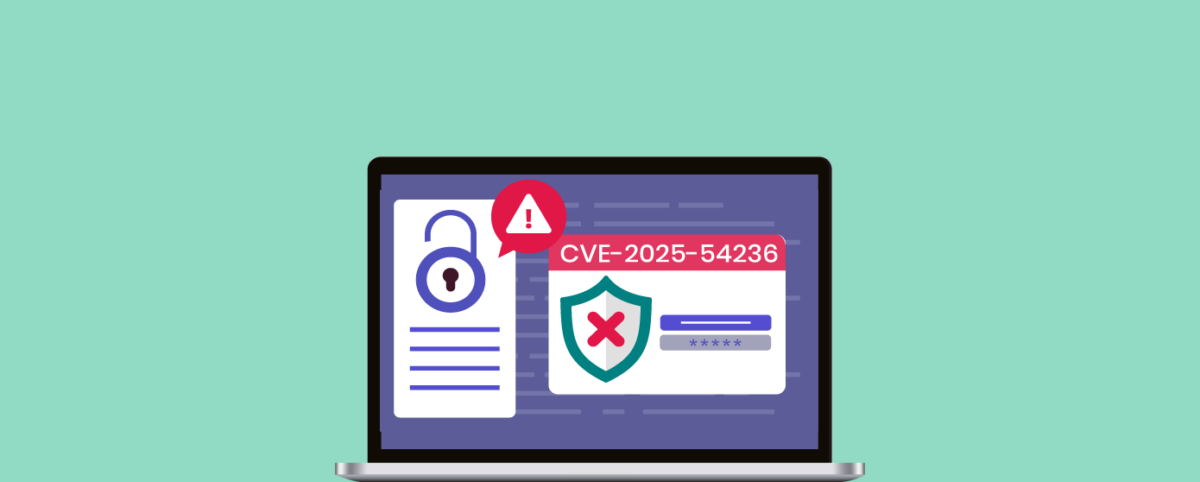Must-Have WAAP Features Healthcare Organizations Need in 2025
Hospitals, clinics, pharma companies and digital‑health start‑ups are now on the front line of application‑layer threats.
Without purpose‑built Web Application and API Protection, vital services and patient safety are placed at risk. Some concerning stats:
- 92% of healthcare entities suffered at least one cyber incident in 2024, up from 88% in 2023.
- A record 116 million patient records were exposed in 2023.
- The average breach now costs US $11 million, the highest of any industry.
Top WAAP Features Every Healthcare Provider Needs
1. API‑First Discovery and Positive Security
APIs now power everything from mobile appointment apps to data‑sharing mandated by the 21st Century Cures Act. Most security teams still treat them as an afterthought compared with web portals. The result is an expanding, largely unmapped attack surface where a single forgotten endpoint can expose thousands of records overnight. Some concerning stats from Akamai’s 2024 study.
- 7% of healthcare organizations experienced at least one API security incident in 2024.
- Two‑thirds maintain an API inventory, but only 24% can identify which endpoints process protected health information (PHI).
- Forgotten or “zombie”APIs have leaked millions of records in recent breaches.
- 29% of providers cite loss of patient trust as the biggest fallout of an API breach.
What to demand
- Continuous machine‑learning discovery of every endpoint, public or shadow.
- Auto‑generated OpenAPI specs with allow‑list enforcement for methods, parameters and data types.
- Zero‑false‑positive scanning for OWASP API Top 10 as well as business‑logic flaws.
- Edge‑level virtual patching in hours, not development sprints.
- CI/CD‑integrated API penetration testing to catch workflow abuse.
2. Harden Patient‑Facing Apps and Legacy Systems
Healthcare’s digital front door combines modern JavaScript portals with EMR plugins written a decade ago. Patch windows are tight, change control is strict and clinicians resist downtime. Attackers exploit these delays and routinely probe for lagging CVE fixes across patient‑facing systems.
- 33% critical and high vulnerabilities remain open for 180+ days after first discovering them. According to the State of Application Security Report by Indusface.
- One‑third of 2024 healthcare cyber incidents exploited already‑patched vulnerabilities that admins had not deployed according to IS Partners
- Researchers demonstrated a 2024 hospital web‑form attack that revealed every upcoming appointment via SQL injection.
- 116 million records were exposed in 2023, largely through web‑application weaknesses according to MedTechDive.
What to demand
- Hybrid dynamic scanning and human PTaaS to uncover OWASP Top 10 and logic flaws.
- Virtual patching for legacy stacks where in‑code fixes are unrealistic.
- Runtime application self‑protection and custom WAF rules to block exploits instantly.
- Mobile‑app hardening such as certificate pinning and root detection.
- Unified visibility across web, mobile and API findings.
3. Demonstrate Regulatory Compliance and Protect Patient Data
Few industries face a tighter regulatory vise. HIPAA, HITRUST, GDPR and multiple state privacy laws all demand proof that PHI is secured and accessed only on a need‑to‑know basis. Controls must not only block breaches but also produce clean, auditable evidence in near real time.
- HIPAA penalties can reach US $1.5 million per violation category per year.
- A New York provider paid US $5 million after insiders sold PHI according to CommerceHealthcare.
- GDPR fines have exceeded €400k for hospitals with weak access controls.
- Misconfigured tracking pixels have triggered multi‑million‑dollar class‑action settlements.
What to demand
- Built‑in control mappings to HIPAA, GDPR, HITRUST, HICP and PCI‑DSS.
- Immutable, time‑stamped evidence exportable for auditors.
- Real‑time compliance dashboards for executives and boards.
- API entitlement tracking aligned with minimum necessary access rules.
- Automatic ticketing whenever a policy drifts out of compliance.
4. Behavioral DDoS and Bot Mitigation at Clinical Scale
Hospitals cannot tolerate even short outages. Scheduling, ambulance triage and pharmacy services now depend on always‑online portals. Disruptive campaigns such as KillNet have shown how easily volumetric traffic and automated bots can cause life‑critical delays.
- 100% healthcare sites witness bad bot attacks as per Indusface
- Pro‑Russian group KillNet knocked hospital systems offline across the US and EU in 2023, forcing ambulance diversions and surgery delays.
- Compromised credentials and exploited vulnerabilities each drive roughly one‑third of healthcare cyber events – Verizon DBIR 2025.
- Up to 30% of a hospital’s web traffic is automated bot noise hammering login and search APIs according to HealthTech Magazine.
What to demand
- Unmetered, globally distributed scrubbing that scales 100× expected peak traffic.
- Behavioural fingerprinting based on URI, ASN, geography and device instead of blunt rate limits.
- One‑click “I’m under attack” toggle with a 100% uptime SLA.
- Bot controls such as CAPTCHA, JavaScript challenges and machine‑learning anomaly scoring.
- 24×7 extended SOC to adapt to new medical‑sector attack patterns.
5. Supply‑Chain and Third‑Party Risk Mitigation
Cloud EHRs, claims processors, remote monitoring platforms and countless SaaS tools form a dense supply chain around every provider. Attackers increasingly move laterally through these partners, turning a vendor outage into a sector‑wide crisis.
- Breaches linked to business associates rose 22% year over year in 2023 as per MedTechDive.
- The MOVEit zero‑day exposed 136 million healthcare records from a single file‑transfer tool as per American Hospital Association.
- The 2024 ransomware attack on Change Healthcare froze billions in payments and delayed prescriptions nationwide.
What to demand
- Origin server protection to ensure that only WAAP edge IPs can access hospital core systems.
- Continuous vendor‑API and client‑side script scanning with anomaly alerts.
- Zero‑day rule pushes within minutes for high‑severity supplier flaws.
- Software bill of materials ingestion and vulnerability tracking for open‑source components.
- A central dashboard correlating vendor incidents, patch status and compliance evidence.
6. Unified Visibility and Zero‑False‑Positive Precision
Small security teams already drown in data from scanners, SIEMs and point solutions. When logs are scattered and false positives run high, risky exposures hide in the noise and linger for weeks.
- 92% of providers were hit by incidents in 2024, yet only 24% can see which APIs touch PHI as per Akamai.
- Bots or known vulnerabilities drive one‑third of attacks, proving the need for precise alerting.
- Patient‑portal traffic can be 30% robots, flooding dashboards with noise.
What to demand
- A single‑pane portal that unifies attack telemetry, scans, DDoS events, bot activity and SLA tracking.
- Human‑validated findings that allow always‑on block mode without business friction.
- Real‑time log streaming and SIEM integrations for rapid incident response.
- Machine‑learning‑guided remediation workflows that close critical vulnerabilities inside 72 hours.
How AppTrana Stands Out as a Leading WAAP for Healthcare
- Reduce complexity by consolidating WAF, API security, DAST, PTaaS, DNS security, SSL, DDoS and bot mitigation, and CDN into one, Ai-powered, fully managed platform.
- API discovery and positive security through machine‑learning mapping and allow‑list enforcement.
- Zero‑false‑positive accuracy enabled by human validation and always‑on block mode.
- Autonomous patching that drastically reduces vulnerability exposure windows.
- Behavioural DDoS and bot defence with unmetered scrubbing and adaptive fingerprints.
- Client‑side protection via by inventorying, tracking and managing all JavaScript files within a single dashboard
- Prevent supply chain attacks by scanning those applications for vulnerabilities
- Audit‑ready compliance reports for HIPAA, GDPR and HITRUST.
Case in Point: From 200 + Days to 72 Hours
Customer profile
A leading U.S. third-party benefits administrator serving more than 2,000 clients nationwide.
Before AppTrana
- Manual patching left web-app vulnerabilities open for more than 200 days, exposing PHI and delaying audits.
- Cloudflare WAF sat alongside DAST tools, but virtual patching required in-house rule creation and false-positive testing, slowing response.
What changed with AppTrana SwyftComply
- Autonomous remediation: the managed team identified, created, tested and deployed virtual patches for every critical, high and medium vulnerability, delivering a clean zero-vulnerability report in 72 hours.
- Same-day onboarding with zero downtime: the production site migrated to AppTrana in a single afternoon.
- Unified platform: DAST, WAAP, DDoS and bot mitigation and zero-day protection in one console, eliminating tool sprawl.
Measurable outcomes
- Exposure window slashed from more than 200 days to 3 days, enabling audits to pass on the first attempt.
- 30 % cost reduction per website after consolidating WAF, Vulnerability Scanning and PTaaS into a single platform.
- Security-operations effort for rule writing and patch validation virtually eliminated, freeing staff for higher-value work.
Ransomware crews, hacktivists and cascading third‑party failures have made application‑layer resilience a clinical issue. With the six capabilities outlined above, healthcare providers can safeguard PHI, maintain service continuity and stay audit‑ready, allowing clinicians to innovate with confidence rather than react to the next breach.
Ready to see how AppTrana can secure your digital‑health estate? Start a free trial or request a demo today.
Stay tuned for more relevant and interesting security articles. Follow Indusface on Facebook, Twitter, and LinkedIn.

 May 2, 2025
May 2, 2025






